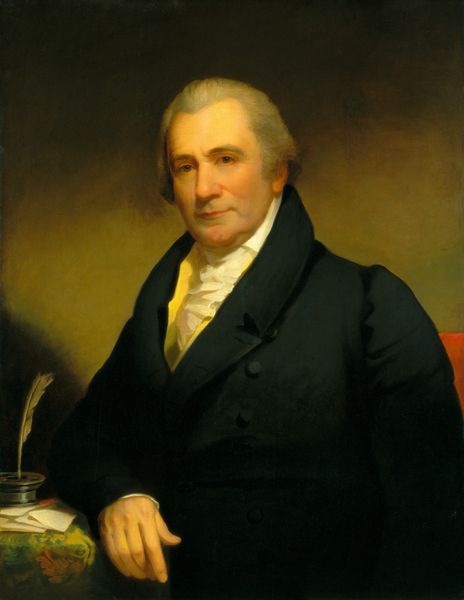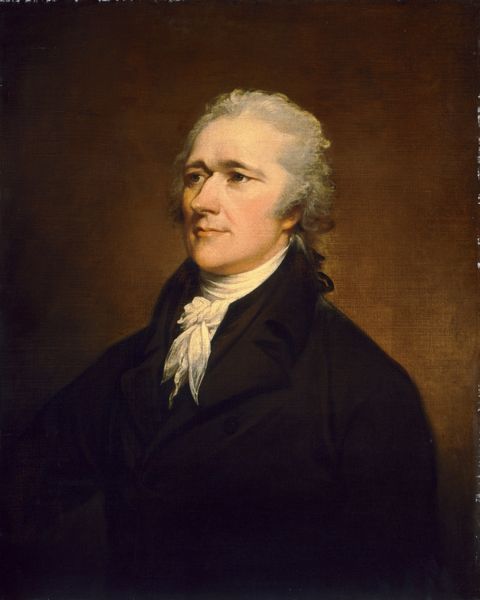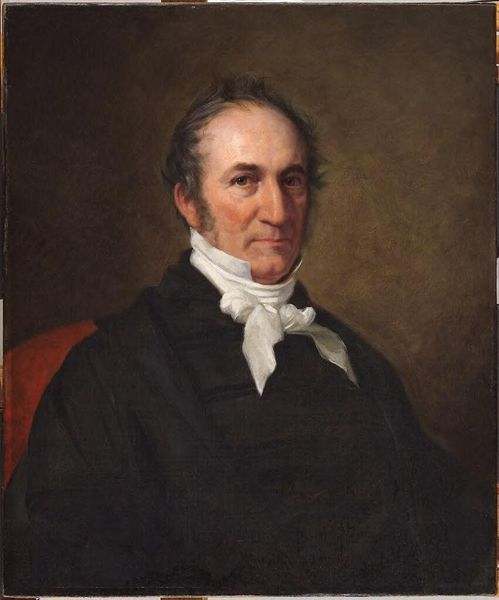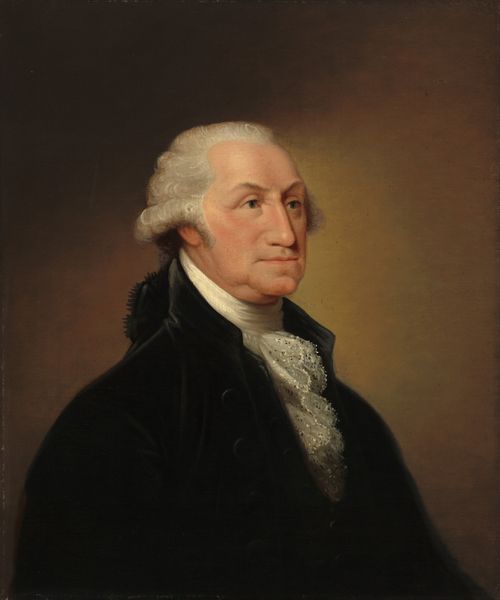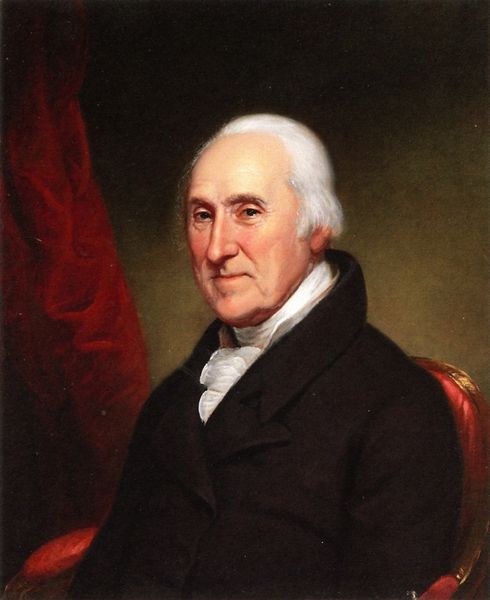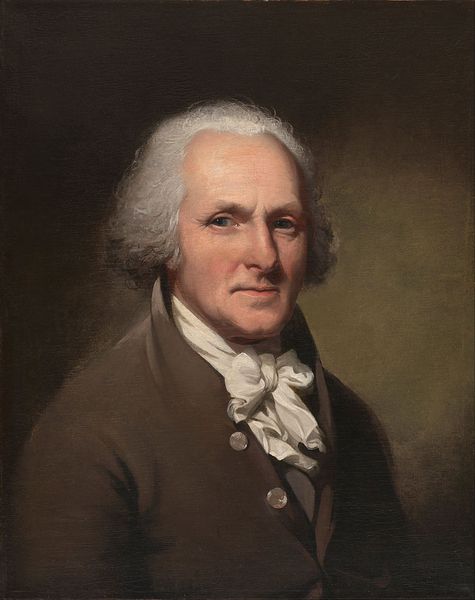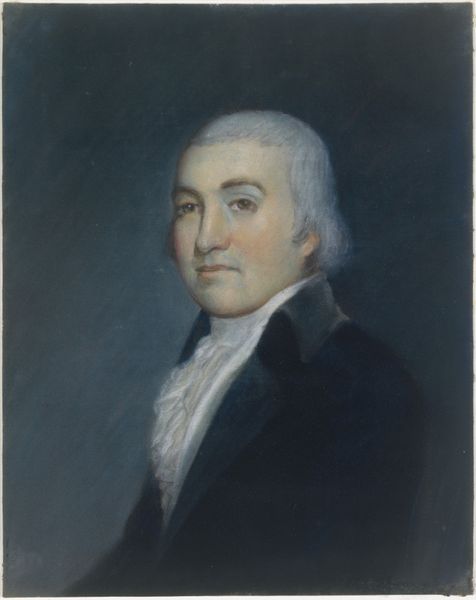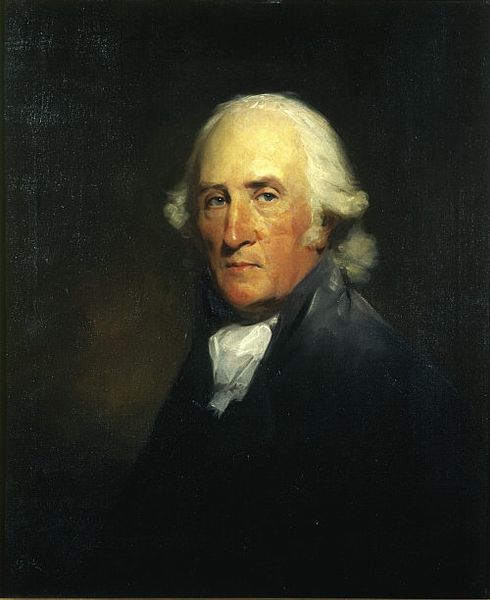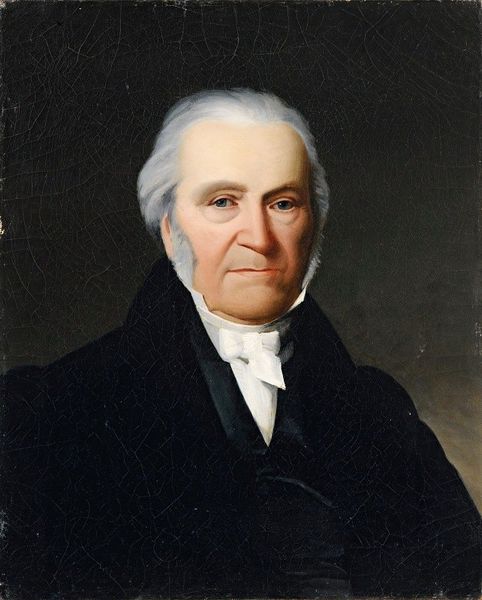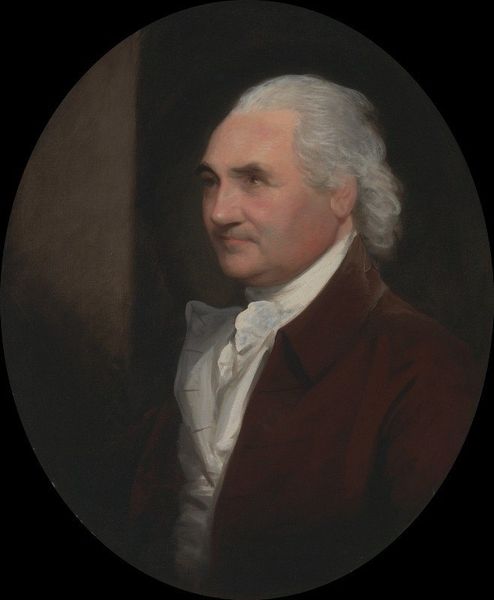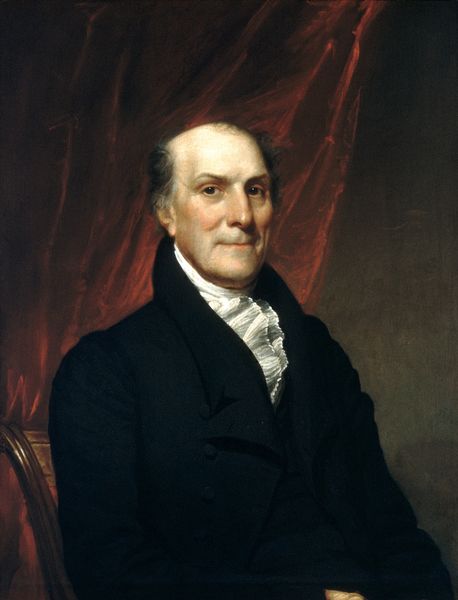
#
portrait image
#
portrait reference
#
portrait head and shoulder
#
animal drawing portrait
#
portrait drawing
#
facial portrait
#
portrait art
#
fine art portrait
#
celebrity portrait
#
digital portrait
Dimensions: overall: 65.4 x 52.1 cm (25 3/4 x 20 1/2 in.)
Copyright: National Gallery of Art: CC0 1.0
Curator: This is John Wesley Jarvis’s portrait of Thomas Paine, thought to have been painted around 1806 or 1807. The composition, rendering, and use of material indicate some clear artistic choices made by the artist. Editor: It strikes me as rather…stern, wouldn't you say? His gaze feels so direct. And those subtle pink tones around his cheeks—they offer a hint of vulnerability that softens the image overall. Curator: I’d like to speak about what that direct gaze really means! Consider that portraits in this period were objects of cultural production; often used by wealthy elites to transmit power and class identity through a culture. The subject’s clothing itself becomes a visual signifier for conveying particular messages to the viewer, the material tells us everything about the function. Editor: Precisely. And it makes me think about the radical politics that Paine embodied and what the painting might attempt to sanitize by presenting Paine within a conventional framework of portraiture of the time. Curator: It's also important to note Jarvis's training in artisanal trades before entering the world of painting, that informs his style here. By approaching portraiture from this hands-on experience, what kind of art emerges that breaks from those traditions in interesting ways? It also suggests new ideas for creating democratic forms accessible across class and political divides. Editor: Yes! Framing the work in connection to the accessibility that also resonates with Paine’s advocacy for human rights and social justice. This reminds me, the image itself was produced in the context of deep political divisions surrounding Paine's legacy—the figure was extremely controversial for challenging religious and political establishments. Curator: So we can consider this work not as just a straightforward depiction, but a material object shaped by artistic training, economic conditions and the broader socio-political battles. It makes us think of representation beyond aesthetics. Editor: Exactly. By grappling with its complexity, we get closer to understanding not only the painting, but the times in which it was created—along with their lasting resonance even today.
Comments
No comments
Be the first to comment and join the conversation on the ultimate creative platform.
